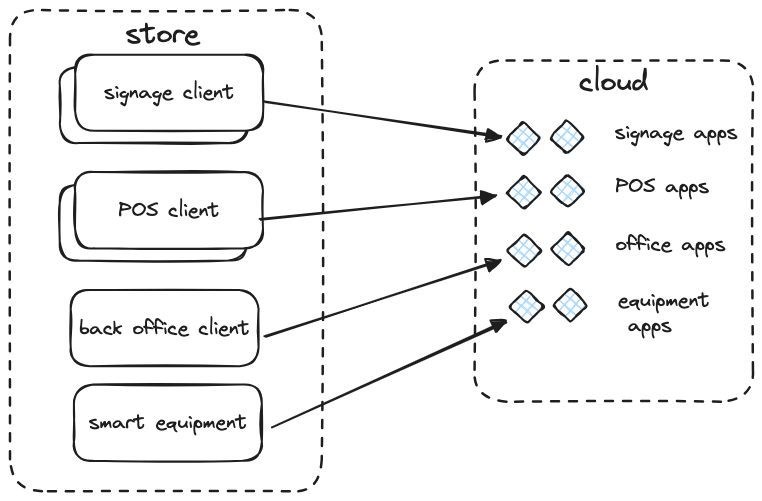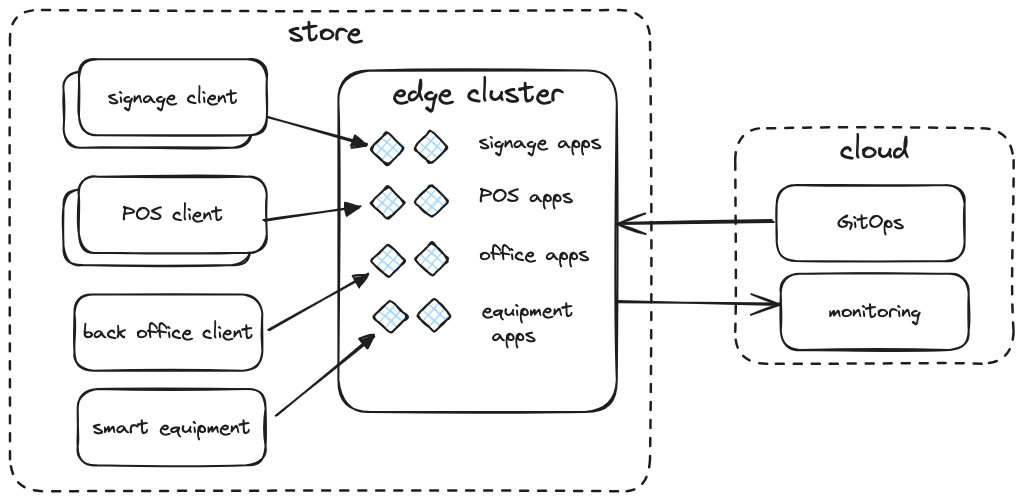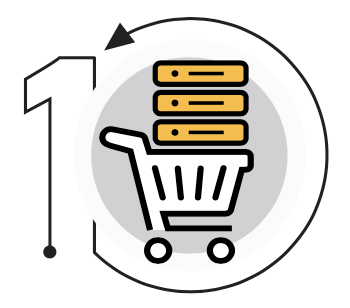1. Retail
Edge use cases
|
|
Edge Computing is a shifting paradigm that enables retailers to offer reliable, secure, and fast services to their in-store shoppers. As retail businesses look to continue their competitive advantage and raise the service levels to shoppers, Edge Computing can be the ideal ally in achieving these goals.
Introduction
Edge computing enhances operational efficiency, provides real-time intel for decision-making, and greatly improves the shopping experience —- ultimately increasing the bottom line.
One of the most impactful technologies for retail is Edge Computing and its role in pushing applications closer to the source of their data with the intent of harnessing real-time, actionable insights into customer behaviors. By decentralizing compute infrastructures back into brick-and-mortar stores, retailers not only optimize their customers’ shopping journey, but also take concepts like “instant retail” out of the science lab and make it a reality of today.
The transformation of retail with edge computing
From mobile apps and smart shelves to automated purchase suggestions and self-checkout options, it’s become clear that retailers are constantly faced with finding better ways to keep up with optimizing store operations, personalizing the buying experience, and employing more technological solutions to stay competitive with the same level of shopping found online. Not to mention the detailed consumer data from IoT devices—barcode scanners, POS systems, interactive displays, inventory software, smart security cameras, and more—which often weigh down and max out the cloud capacity and capabilities.
As a result of the advances in technology, more and more quick service restaurants are adopting Edge Computing to support their restaurant modernization and growth needs. Not only does Edge play a critical role in enhancing operational efficiencies, providing real-time retail analytics, and identifying new customer trends but makes it possible to further increase use of IoT devices, artificial intelligence (AI), and machine learning (ML) technologies.
How edge creates opportunities for retailers
Due to the technological advances in retail stores, cloud computing is being maxed out. It simply cannot process the massive amounts of data nor meet every compute needed by stores. Hence why the retail companies who first adopted cloud computing are now the first to move compute power at the Edge. Here, data is collected, processed, and streamlined in unprecedented ways. Leveraging the Edge can also give forward-thinking retailers the competitive advantage, particularly by providing real-time insights for a more personalized and optimized in-store shopping experience, the necessary data to build a more dynamic inventory, and the intel to create long-term customer loyalty.
By 2025, 20% of all Tier 1 multichannel retailers will use edge computing to enable edge artificial intelligence (AI) use cases, which is an increase from fewer than 5% today. -- Gartner
Other key benefits of using Edge include reduced costs and latency, improved reliability, expanded data transmission bandwidth, enhanced compliance with jurisdictional requirements for security and privacy, and faster processing for VR, AI, and ML technologies.
Why edge matters
Edgecell’s Platform-as-a-Service (PaaS) is a proven tech-forward Edge Computing solution that enables retailers to survive, thrive, and remain competitive while meeting today’s growing digital demands. By providing an innovative platform to process, analyze, and store data at the Edge, a plethora of services real-time insights and revenue streams are readily available —- operational efficiency, asset tracking, loss prevention, customer ID knowledge, inventory optimization, security and surveillance, and more —- without an IT team and at 50 percent of the cost of traditional cloud providers.
Deployment patterns
Classic deployment
There is an explosion of technology in a typical retail store. There are complicated point of sale systems, smart equipment, dynamic signage, AI cameras and back of office applications.

Manually upgrading applications on premise with traditional deployment is very expensive and time consuming.
Cloud deployment
Many companies have tried to move some or all of these applications to the cloud. That has led to a lot of complications. If the network is down, the store cannot handle transactions. To overcome this barrier, POS vendors have created two versions of their application, one version that runs in the cloud and a less functional version that runs on premise.

Having IOT and AI applications run in the cloud also leads to complications. If the network is down, no data is captured or processed. It is also very expensive to move raw data, especially video to the cloud.
Edge deployment
An edge deployment gives retail companies the best of both worlds. They have the reliability of on premise applications with the easy of cloud application deployment.

Each store has a highly available cluster of edge servers. All applications run in the cluster. Edgecell makes this deployment pattern possible.
